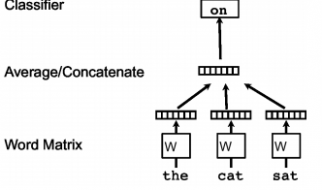Python has three popular ways of creating virtual environment at the moment. In this post I want to talk about how to use each.

Virtual Environment
Virtualenv was the default way of creating virtual environment for many years. It is still used by many although people are moving to improved pipenv or conda (explained below).
Here is how you create a new virtual environment. We will talk about why it got replaced by pipenv after that. Pip comes pre-installed for most newer versions (Python 2.7.9+ or 3.4+). But if you don?t have it installed, you can install it by downloading get-pip.py file from https://bootstrap.pypa.io/. Then cd into the downloads directory and run the file as follows:
cd /path/to/downloadsfolderpython get-pip.py
Once you have pip installed, install virtualenv by running below
pip install virtualenv
Once you have virtualenv installed, you can cd into the directory of your choice in the terminal or command prompt, and then run the following:
virtualenv venv
This will create a folder called venv in the directory. You can name your virtualenv folder anything you?d like. To activate run (works in windows only)
venvScriptsactivate
There you go! thats how you create a new environment. pip install package to install any package you need.
To make your repo reusable, make sure to create a record of everything that?s installed in your new environment, run
pip freeze > requirements.txt
If you are creating a new virtual environment from a requirements.txt file, you can run
pip install -f requirements.txt
If you open your requirements file you will see a different package with its version in each line.
As you can see we are creating a virtual environment and then using pip to install packages, and then manually calling pip freeze to save whats been installed. What if you didn?t have to make this a two part process? What if you could merge pip with virtualenv ?
Enter pipenv.
PipEnv
Pipenv was created due to many shortcomings of virtualenv such as it not making a distinction if project dependency and the dependies of the project dependency, not having mechanism to distinguish dev and production needs etc.
To install pipenv, you need to install pip first. Then do
pip install pipenv
Next, you create a new environment by using
pipenv install
This will look for a pipenv file, if it doesn?t exist, it will create a new environment and activate it. As you can already see, the workflow is simplified by not seperating the process of creating a new environment from scratch vs creating with a existing file. To activate you can run
pipenv shell
To install new packages do pip install package , and pipenv will automatically add the package to the pipenv file that?s called Pipfile. You can also install package for just the dev environement by calling
pip install <package> –dev
I advise anyone to actually use Pipenv instead of virtualenv.
Conda Environment
If you are an engineer, or a scientist or use Numpy/Scipy package in windows environment, you have probably experienced the frustration of having to do a lot of work to install numpy/scipy packages. Anaconda is a distribution of python that makes it super simple to install those packages. Anaconda also has their own virtual environment system called conda. Make sure to have Anaconda installed.
To create an environment call this command:
conda create –name environment_name python=3.6
You can save all the info necessary to recreate the environment in a file by calling
conda env export > environment.yml
To recreate the environment you can do the following:
conda env create -f environment.yml
I hope this was useful! Please leave questions in the comments.


